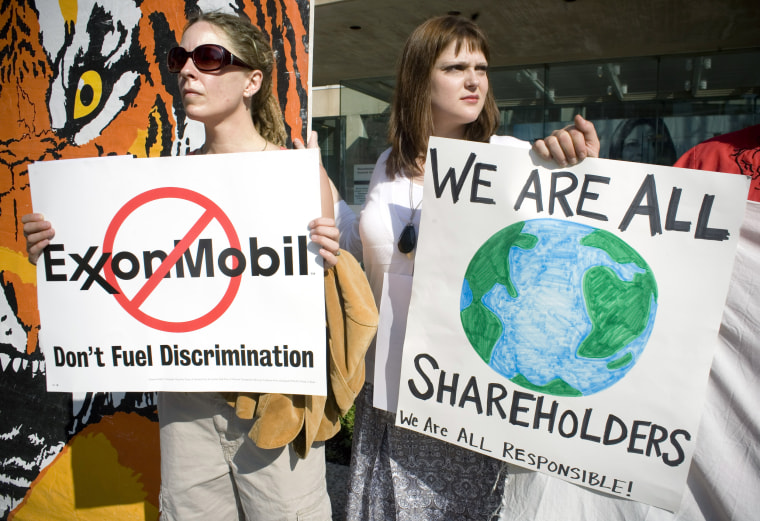At the peak of the recession in 2009, two former real estate developers in Pennsylvania surveyed the financial wreckage and decided to create a new kind of bank.
They called it e3bank, a reference to the “triple bottom line” concepts of “enterprise, environment and equity” that would guide its lending. Energy efficient buildings, for example, would receive preferred mortgage terms, and the way a company treats its employees would be considered in deciding a loan application.
The bank failed to gain traction and vanished, along with nearly all of the handful of other so-called “green banks” started around the same time in reaction to the financial meltdown, which was widely blamed on short-sighted speculation. But the concept that a capitalist society could fix its economic ills and address critical issues like climate change by altering the way that money is allocated did not disappear with them.
Today the practice of investing in sustainable assets and social change is booming in boardrooms and at shareholder meetings of publicly traded companies around the nation and the globe. In March, for example, JP Morgan Chase, the world’s largest bank, announced that it will no longer fund new coal projects in developed nations.

The movement is known by a variety of labels – ESG (for environmental, social or governance), ethical, green, impact and socially responsible investing, to name but a few – and imposes different requirements on managers of capital, be they bankers, insurers or corporate executives.
In addition to being accountable for returns to investors, they may be required to do their part to temper global warming, stop pollution, close the widening economic inequality gap, do something to further gender equality or not contribute to governmental corruption, for example.
T.L. Hill, an associate professor of business at Temple University, said that a number of forces have led to sustainability and other societal concerns becoming part of the mainstream.
“One force would be the movement of the alternative views of many baby boomers from the activist, back-to-the-land fringe into the mainstream –- as the people themselves moved into mainstream business, economic and governmental institutions,” he said. “Another would be the increasing realization that careful, creative attention to ESG factors can save firms and organizations money, usually by reducing waste, and increase reputation.”
Whatever the impetus, more asset managers are taking the plunge. As of 2014, the last year for which numbers are available, more than $4.3 trillion in U.S. assets held by investors – including institutions like pension funds – were applying some type of environmental, social or governance (ESG) requirement to their portfolios, according to a report by the U.S. Sustainable Investment Forum. That is 17.9 percent of professionally managed assets overall, up from 11.3 percent in 2012.
Many experts trace the movement to the “green” banks that began springing up in the last decade, a development that prompted the New York Times to ask “Is green banking a sensible business strategy for banks?” in one 2009 article on the trend. The piece noted that one of the upstarts -- One Earth Bank of Austin, Texas -- failed before it opened, and listed e3bank, First Green in Florida, GreenChoice in Chicago, the ShoreBank Pacific in the Northwest and Green Bank of Houston as aspirants hoping to avoid the same fate.
Of those five, however, only First Green survived. Regulators proved reluctant to approve banks in the midst of a recession that was destroying them by the dozens without fulfilling tight capital requirements. E3 tried to acquire another bank to bypass the process of getting a new license, but it didn’t work out.
“Finally it was clear that it just wasn’t going to be,” said Phil Hinerman, an e3 investor and an environmental attorney at Fox Rothschild.
Related: Old TVs Create Toxic Problem for Recycling Programs Across America
The turning point for the movement came just a few years later, however, when when investors and asset managers reassessed the assumption that investments in sustainability requires an added financial cost, said John Dernbach, a professor of law at Widener University.
“Pretty much the way it has traditionally lined up is, in development and environment, you pick your team, sort of like the Eagles and the Packers, and it’s either one but it’s not both,” he said.
But a 2015 analysis published in the journal Business Ethics, for example, found that despite the myth that goodwill is earned through diminished yields, the average performance of mutual funds and other investment products that incorporated some type of ESG requirement into their investment guidelines fared the same as those that didn’t.
The growth also occurred at a time when pressure was building for action on global warming and the attendant sociopolitical instability triggered by growing numbers of natural disasters and commodity shortages.
The consequences of the heating planet have long been feared by the insurance industry. Munich Re and Swiss Re, two of the largest reinsurance companies in the world, flagged the threat of climate change to the global economy as early as the 1970s. Meanwhile, the economic toll from natural disasters has increased to an annual total of approximately $190 billion, up from about $100 billion thirty years ago, according to a United Nations report.
“Given their core business of understanding, managing and carrying risk, insurers are in the front line when it comes to the economic and social impacts of weather events, which are becoming more frequent and more severe due to climate change,” said Butch Bacani, program leader for the United Nations’ Principles for Responsible Insurance initiative, a far-reaching effort launched in 2006 to incorporate sustainability into the insurance industry. Companies that sign onto the initiative incorporate ESG factors into their underwriting and also fund disaster mitigation projects -- like wetlands cultivation or reforestation of rainforests – to try to limit the impact of future catastrophes.

“We want to see a world that is more resilient, which means that disasters cause less damage,” said Robert Muir-Wood, chief research officer at Silicon Valley’s Risk Management Solutions, or RMS, the world’s largest catastrophe risk modeling company. As part of the Principles for Sustainable Insurance initiative, RMS has explored the effects of proactive mitigation measures, like supporting marshlands in coastal areas, into overall risk assessments, which in turn could be utilized by many of the world’s largest insurance companies.
In 2012, insurance companies representing 10 percent of world insurance premium volume, which had $5 trillion of assets under management, had signed on to the program. By this year, that had more than doubled, with more than $14 trillion of assets under management.
Business leaders also are feeling pressure from investors to set social or environmental goals in their forecasts.
Related: No More Plastic Legos? Company Searches for 'Sustainable' Material
Between 2010 and 2015, the number of shareholder resolutions pushing for some form of ESG commitment increased from 407 to 460 -- a 13 percent increase.
Many don’t win approval. On May 25, for example, resolutions at shareholder meetings for both Chevron and ExxonMobil calling on management to incorporate climate change into the companies’ business models were narrowly defeated, with 41 percent supporting the measure at Chevron and 38 percent at Exxon.
While shareholder resolutions are not binding on management, “They nonetheless serve as an early warning signal of important issues raised by company critics, and as a barometer of dissent,” said Heidi Walsh, executive director of the Sustainable Investments Institute. “When resolutions earn about 20 percent, this is seen as a level of support that boards of directors have a hard time ignoring, and generally prompts some response. When votes exceed 40 percent, the issues become even harder to ignore.”
{
"ecommerceEnabled": false
}But there have been a few successes, as well. Shareholders this year won a vote to force Clarcor, an air filtration company, to produce a report on sustainability.
And even narrow defeats – such as a recent vote by shareholders at Occidental Petroleum seeking a report on climate change – sends a loud signal to management, according to Walsh.
“This has never happened before at a large oil company and suggests that investors at this company — and probably others in the energy sector — increasingly want to know how companies will respond to the market uncertainties posed by climate change,” she told NBC News.
Probably nowhere has the success of the new investment emphasis been as noteworthy as in the construction sector. Energy-efficient buildings, one of the cornerstones of e3 bank’s strategy, have boomed in recent years. Twenty-five percent of new homes in the U.S. are now energy efficient, a rate that has doubled over the past ten years. In the commercial real estate space, the numbers are even higher. High efficiency office buildings accounted for 50 percent of new buildings in 2015, up from just 2 percent in 2005.
“These properties go into investors’ portfolios every day, and many investors actively select high-performance properties,” said Philip Henderson, a senior financial policy analyst with the Natural Resources Defense Council. “This is sustainable finance.”
